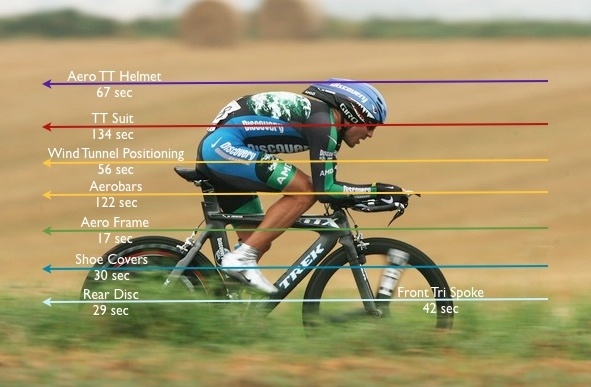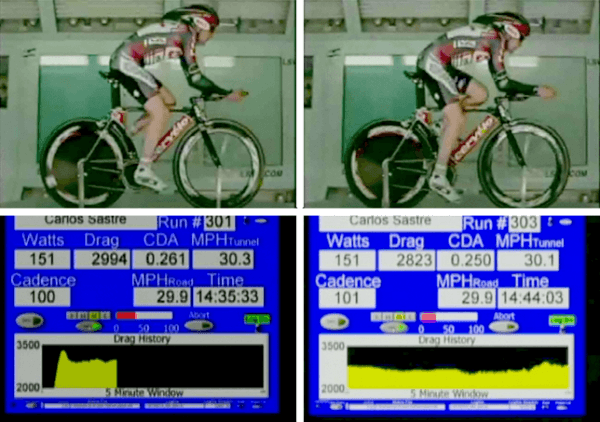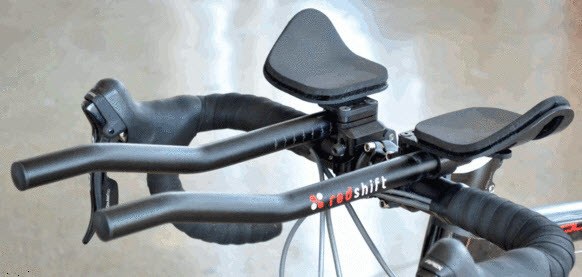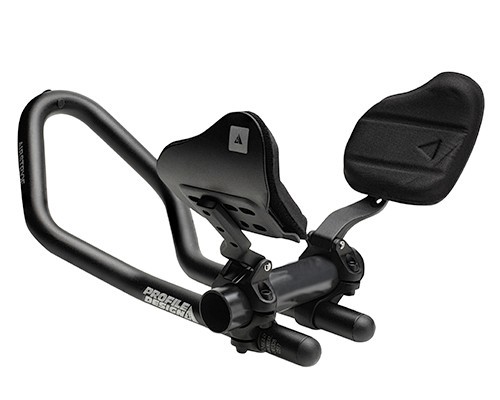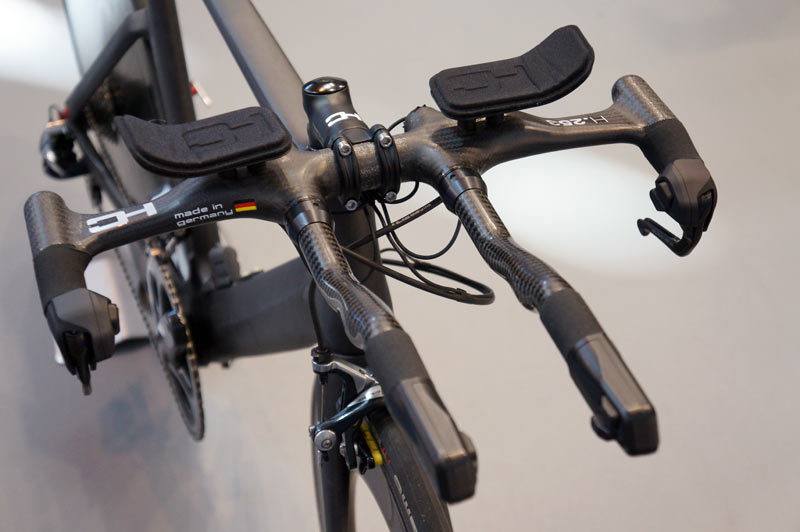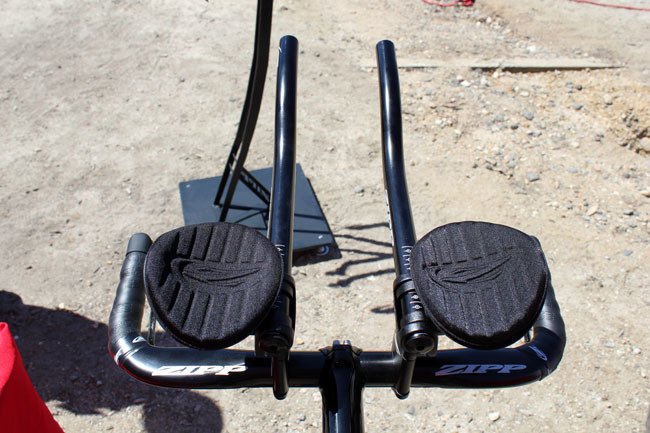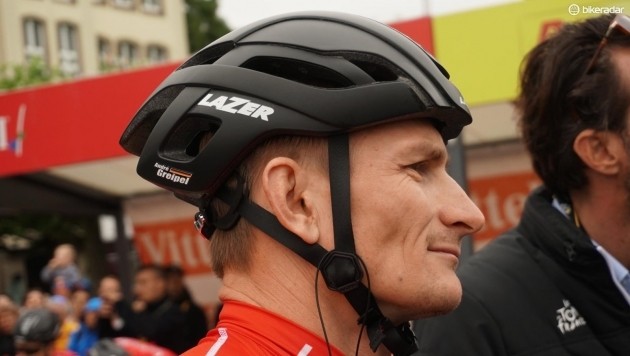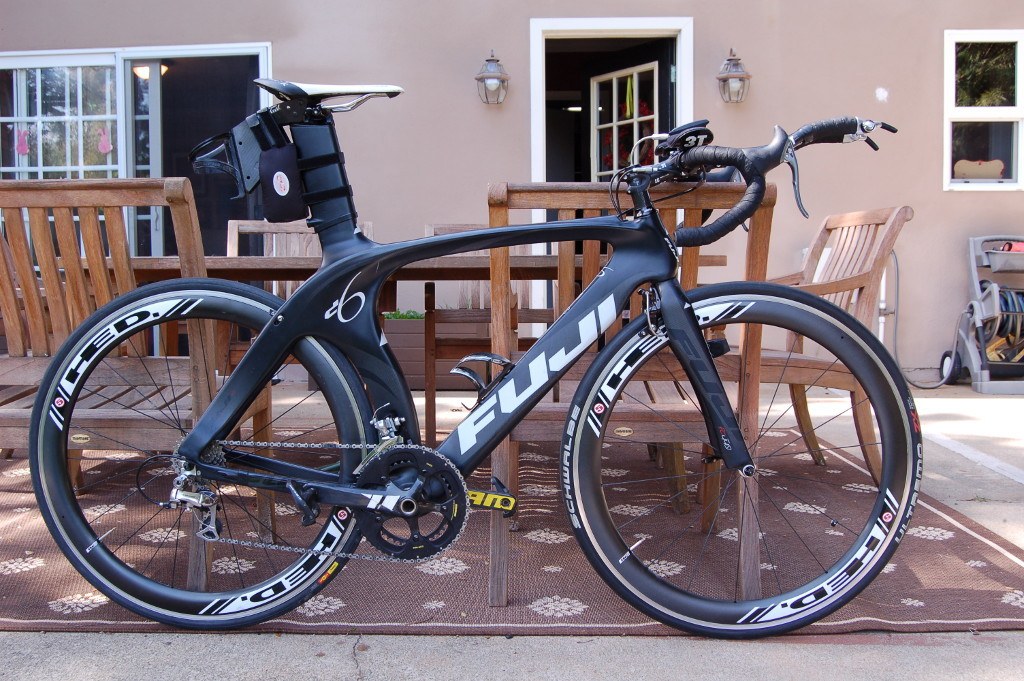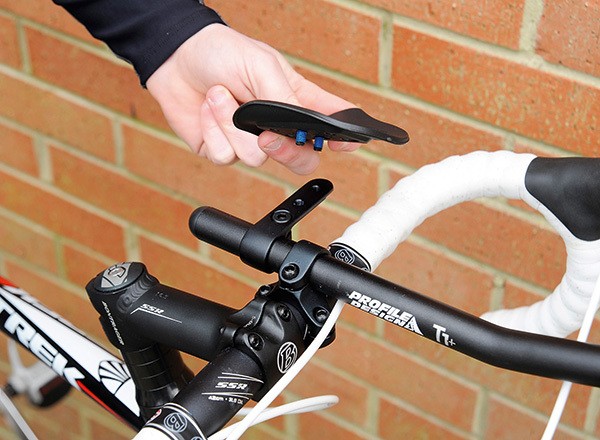- You are here:
- Home »
- Aero Bars
- » Aero Bars: The Essential Guide
Aero Bars: The Essential Guide
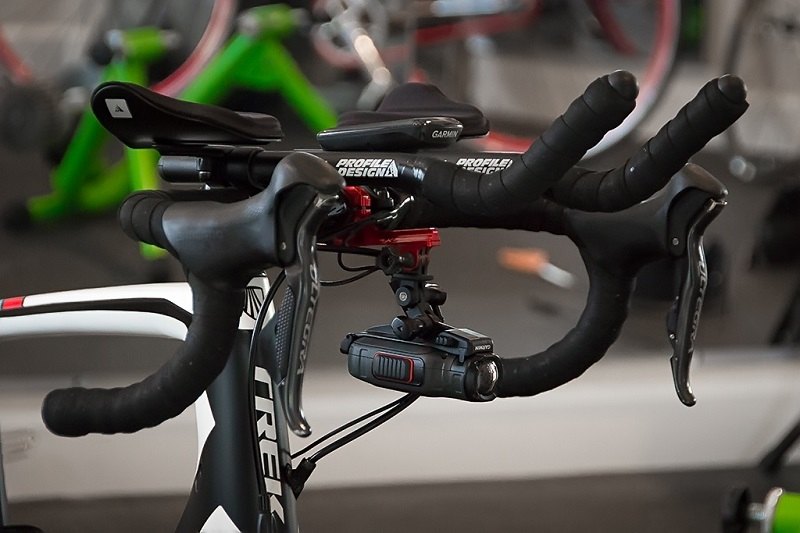
When Greg LeMond came out for his time trial during the 1989 Tour De France, his aero bars turned out to be the main focus of the event. With the help of these innovative bars sticking out from his regular handlebars, he was able to smash records and do something that had never been done before in the history of the race, all while remaining well within regulation.
Flash forward to current times and aero bars are used by everyday cyclists through to professional athlete and it’s all thanks to the numerous benefits they offer.
With one simple addition of this cycling gear to your bike you’ll improve your riding speed, comfort, and performance, all without having to spends thousands of dollars on the latest and greatest triathlon bike.
Aero bars are quite simple in their design but it’s what they do for the rider’s position that gives them their fame. Anyone who’s ridden long distances or tried to improve their speed on the road will know how important is to achieve this narrow position and keep the wind from slowing you down, and that’s exactly what innovative aero bars help you achieve.
If you’re completely new to aero bars or just want a bit more information on how they can benefit you, this guide is the place to be. We’ll answer the most common questions asked by cyclists about these aerodynamic accessories and how exactly they can benefit you when they’re being used correctly.
What Exactly Are Aero Bars?
Although the name is sort of a giveaway, the basic description of aero bars is a set of handlebars that attach to those already on your bike. Another giveaway in the name is the aerodynamic abilitie that this gear gives your bike and the position that it puts the rider in which offers them a lot of benefits.
Unlike standard bars on bikes, the aero bars comprise of both the long bars for the rider to grip and cushioned pads for your elbows. As they attach to your bike they offer a comfortable and aerodynamic alternative to your regular riding position and for that reason are favored by all kinds of cyclists, both expert and beginner.
Aero bars go by many names in the riding world including tri bars, clip-on aero bars, or triathlon bars. No matter the name, they all have one purpose and that to improve your aerodynamic performance so that it rivals even the most skilled cyclist riding on the most expensive tri bike around.
What makes these bars so popular is that they achieve all of their benefits at a relatively low cost, which is nice to see in the bike gear market. For many cyclists, it’s just not feasible to spend a few thousand dollars on a tri bike for the main event and so the aero bar offers a solution with so many other advantages.
The most common place for tri bars is on a road bike and this is due to the versatility that these machines offer. They’re lightweight, great at taking corners, and easy to handle so the addition of bars just seems like a match made in heaven.
Although it is possible to attach aero bars to other bikes like mountain bikes and hybrids, you’re really going to get the best results from a road bike and when they’ve been correctly fitted.
Who Can Benefit From Using Aero Bars
There’s a common misconception with aero bars and all kinds of aerodynamic cycling gear that they’re only for serious athletes or professionals who compete as career and passion. The truth is, anyone can benefit from using aero bars in a number of settings, so unlike investing in an expensive tri or time trial bike, you’ll actually be getting so much more use from the bars than you first thought.
Not every bike has been designed to work with aero bars, but you’ll find that a majority of both hybrid and road bikes have. As most people have a road bike, due to its versatility, the simple addition of aero bars can transform your riding experience into something that can rival even the most expert cyclist.
The Benefits Of Aero Bars
Since LeMond showed off just how impressive his aero bars were in the late eighties, it seems that everyone wants a turn at these innovative accessories.
For such an affordable piece of equipment, there are a staggering number of benefits that aero bars deliver and regardless of the brand or how much you spend on them, you can almost guarantee that you’ll achieve them all.
Lower Wind Resistance
Every cyclist knows about wind resistance and how much of a determining factor it is when you’re riding. The more surface you have for the wind to connect with the more drag you’ll create, and the purpose of having aero bars on your bike is to change your riding profile and make you narrower, ultimately reducing your surface area and keeping the wind resistance low.
Speed
The most popular benefit of aero bars, and why so many professional cyclists use them, is the added speed that they can bring. These bars improve your aerodynamics and improve your speed, which is precisely why LeMond used them in the famous time trials of the 1989 Tour De France.
Comfort
Riding for short or long periods can be physically taxing, especially in certain areas where your body goes through a lot of strain. Having aero bars attached to your standard road bike gives you the option to change positions as you need and relieves some of the common discomfort that comes from riding your bike.
The pads found on aero bars add another level of comfort for your elbows then compared to riding a regular bike and can help absorb some of the shock from riding on the road as well.
Energy Saving
There’s no doubt that riding your bike is a strenuous event, and for people involved in triathlons and other events, you’ll need to save that energy for what is yet to come. By allowing you to spend less energy to get faster speeds, aero bars can be extremely energy efficient.
Studies have shown that clip-on aero bars can reduce the rider’s power output by 29.4 watts which means over a forty kilometer distance you can expect to shave 2.5 minutes off.
Reduced Injury
There are so many injuries and medical conditions that are common in the cycling world, and a lot of these have to do with poor positioning as you ride. Attaching aero bars to your bike can have dramatic effects on your posture, comfort levels, and stresses, so you’re less likely to develop ongoing conditions like back and neck problems when they’re on your bike.
The benefits possible with aero bars on your bike will, of course, depend on a few factors including the quality of the bars, skills of the rider, the bike they’re being installed on, and how efficiently you ride with them, but for most cyclists it will be possible to achieve all of these and more when used correctly.
The Anatomy Of An Aero Bar
When looking at this important piece of bike gear you might not think there’s too much to them, but there might be more than you first thought. The two main areas to consider in an aero bar is the bar itself and the pads.
Most of these bars are clip-on which requires special installation, however, this is simple to do at home these days. Some others allow for internal cable routing and in that case, you might want expert help with these additional parts.
Bars
These are two forward facing bars with a grip on the end for the rider to hold onto. Commonly made of carbon or aluminum, some bars also come with adjustment areas that allow you to change their length and width to suit the cyclist. There is the option of bars with separate skis or those that come in one complete bar, so it depends on your preference.
Pads
Not all aero bars come with cushioned pads, with some giving the option to install your own after the fact. Pads are generally made from something like foam that allows a firm but comfortable place to rest your elbows.
There are some brands which make aero pads as their own product and cyclists often find these are beneficial in achieving an even better aerodynamic position in the most comfortable way.
Clip-On Parts
Contrary to the name, clip-on aero bars aren’t usually attached with a simple clip but rather screws that allow them to secure firmly to your bike. Depending on the style, there will usually be a few different places for attachment and you’ll need some basic tools in order to get the job done.
Additional Parts
With so many different brands out there you’ll be able to find aero bars with extra features that make riding even easier. A common feature is a flip up bracket that allows you to easily move your aero bars out of the way when you don’t want to use them.
How Do Aerobars Improve Your Performance?
You know all of the benefits that aero bars can bring, but how exactly is it that they improve your performance? Many people will use their aero bars without giving much thought to the science behind them, but once you’re in the know it can actually help you to become a better cyclist.
The first thing people want to know is how much a set of aero bars can actually improve your performance. Based on studies in the past, there are some real results that prove just how efficient these accessories are.
As discussed earlier, a rider can expect to save around 2.5 minutes from a 40-kilometer ride when they have aero bars attached to a road bike, which is pretty phenomenal for someone wanting to use them in a triathlon.
However, there is some debate about when are where you’ll be able to use your aero bars. For one, aero bars are completely banned in road races due to a few factors. Firstly, you’re riding in close vicinity to other cyclists and the danger of poking one of them with your bars or causing an accident brings a very real threat to an otherwise safe race.
Secondly, road races usually have tighter corners which aren’t advisable for the use of aero bars and so it’s best to stick to something that can handle well.
In terms of triathlons, depending on the length of the course there are only certain types of aero bars permitted and these are called “draft legal” bars. The legality of these is determined by the governing body International Triathlon Union as a way to keep these races fair and safe for all riders.
Usually, draft legal bars are required for Olympic length triathlons, however, for other distances, you may be able to use any bars that you choose.
How Aero Bars Stack Up Against Other Handlebars
There are thousands of different bikes available to the modern cyclist and with it a dizzying array of choices for the most common parts. The handlebars make a huge difference to how the bike handles, your comfort level, positioning, and speed, so understanding what makes each of them unique can help to choose one that’s best for you.
Within these categories, there are also hybrids that combine two or more features from these popular styles and offer something completely different, but for the most part, cyclists will be happy to choose from these.
For those who would never consider anything other than an aero bar, there’s another decision to be made and that’s what type of aero bar exactly you’ll have fitted.
The Different Types Of Aero Bars
One of the most important factors to consider when choosing you aero bars is which material you’d prefer for the make. Cyclists often hotly debate about the frames of their bikes and which material is superior, so it’s no wonder that aero bars undergo the same kind of scrutiny with each type offering something unique from the rest.
Carbon Aero Bars
For many riders, there’s simply no other choice but carbon, and this goes for all of their bike parts. Carbon aero bars have a great advantage for being lightweight and with many of them weighing around half of what other materials do, this is definitely something you could use to your advantage.
In addition to the lightweight feel, many believe that carbon bike parts allow for more responsive steering which can be a nice bonus since aero bars overall are said to hinder your steering somewhat.
However, they do cost quite a bit more than other materials and might not be as long-lasting. If you’re someone who prefers a more rigid and durable feel to your bike, carbon might not be the best option.
Aluminum Aero Bars
Aluminum is a popular material for bike parts thanks to its strength and affordability. Many road bikes are made from aluminum or aluminum alloy for this very reason and it’s why so many cyclists put their trust in the material. In terms of weight, it’s not capable of being as light as its carbon counterpart but that’s not to say it’s heavy either.
Aluminum alloy aero bars are extremely tough and when you’re racing a bike at high speeds and happen to come off of it, having any parts made of this means they’re likely to stay put. People might agree that carbon bars look sleeker, but it all depends on what your preference is when shopping for this type of gear.
Steel Aero Bars
Probably the least common material used for aero bars but still popular nonetheless is the steel aero bar. Steel is certainly the heaviest of all which is usually why people shy away from this in their aero bars, being that their main purpose is to provide you with aerodynamics, however, they can also be quite affordable.
Steel is noted by cyclists as being trustworthy on a ride, and in particular when riding longer distances, so you might want to consider your usual length if you’re going to make this your preference. Although it can feel heavy duty it might also feel secure, which can be a good thing when you’re relying on your bars to steer you where you want to go.
Which Aero Bar Is Best?
If you’ve never ridden with aero bars before or tried out a friend’s, you’re probably completely lost about which direction to go in. However, just like all bike parts, you’ll want to go with something that matches your riding style, goals, and current situation.
For an entry level cyclist with no experience using aero bars, it might be best to choose something more affordable like aluminum or steel so you can get a feel for the device and how beneficial it is.
Those who prefer to ride with a carbon bike will no doubt see the benefits of using carbon aero bars, however, the two are not always necessary together. If you’re planning on competing in a triathlon with rocky surfaces and some potential road shock, it’s believed that carbon can help to dampen some of the vibrations.
However, some cyclists will tell you that a quality pair of aero bar pads can do the same thing and for a lot cheaper.
There’s really no definitive answer about which of these styles of the aero bar is best, and like most things to do with cycling, you’ll know exactly what you like as soon as you feel it. The smartest option is to shop around the top manufacturers of this aero equipment and find one with reviews that meet your needs as a cyclist.
The Top Manufacturers Of Aero Bars
There are some brands known to cyclists as the best in the business, with instantly recognizable names that stand for quality and efficiency. In the realm of aero bars, there are also recognized names, with many of the top makers of these bars doing nothing else but making these products, which prove just how well they know how to do it.
Profile Design
As one of the most prolific names in the aero bar industry, Profile Design has a long history of creating parts and accessories for cyclists.
Profile Design first began making bike parts in 1988 and with nearly 30 years behind them, it’s obvious that they know what they’re doing. Profile Design aero bars are considered some of the best around and with so many different styles to suit every rider and bicycle.
Vision Tech
This iconic brand is considered a leader in carbon bike parts and their range of aero bars are always reviewed as top performers. Vision Tech aero bars are made with years of history innovating and designing parts that can help a cyclist achieve their best.
They’re considered industry leaders and have countless professional triathletes and teams who gladly support their brand.
Zipp
Zipp prides themselves on being the gold standard for cyclists and their range of wheels, bars, stems and seat posts prove it. Zipp aero bars are generally made from carbon fiber and the brand seems to know exactly how to work this material in order to get the best results.
With ranges to suit each individual type of rider from triathletes to cross-country cyclists, you will be guaranteed something that can help you perform your best.
Aero Bars Vs Other Triathlon Specialized Equipment
Those serious about improving their performance on their bike will likely already know about the myriad of options out there that promise aerodynamic greatness. If you’re still unsure about which of these accessories might work best for you, we’ve compiled a quick rundown of the other triathlon gear you can get and what results you can expect from them.
Aerodynamic Helmets
These are probably the most common piece of aero equipment you’ll see besides bars, and for some triathlons and events, they might even be an official requirement.
The time saved in a 40km bike ride equates to around 67 seconds, so they can have quite an impact on your overall speeds if you wear the right one. Some riders are resistant to wearing these helmets due to their bulky look, but they can actually be quite effective in the long run.
Skinsuits
When you think about how much surface area your body takes up, it makes sense to equip it with something that can lower the wind resistance against it. Skin suits have been proven to be quite effective when compared to wearing a standard race bib and jersey, with the more premium brands giving riders around 2 minutes difference.
However, these products can be quite expensive and difficult to get into if you’re in a triathlon setting, so weigh up your options.
Aerodynamic Wheels
There’s no doubt that a quality set of aerodynamic wheels will help your overall time, but they can also be a costly addition to your bike.
Experts recommend that if you do want to add an aerodynamic wheel to your bike you should only focus on the front wheel as it does most of the work. With aero wheels fitted to your bike, you can expect to shave about 50 watts of energy from each wheel turn, which can make quite an impact when you’re tired.
Earplugs
There are a few cyclists who follow this approach and it’s definitely one of the more affordable ways to improve your speed on the bike. Earplugs can be beneficial to cyclists because experts believe that your body associates the sound and volume of the wind in your ears to how hard you’re working, which can have an adverse effect on your performance.
TT Frame
The most expensive option for aerodynamic bike equipment is a TT frame and fork, which lower you into the ideal position. As this can be achieved with aero bars it might not be a necessity for some, however, if you want the real deal in terms of positioning then these can be helping for time trials.
Some cyclists like to use just one piece of equipment for aerodynamics and others like to have them all working together. There’s no right or wrong way to go about it as it depends on the individual cyclist and where they’ll be riding, all that matters is that you’ve gone with a reputable brand and had them installed correctly onto your bike.
How To Install Aero Bars On Your Bike
There are two schools of thought when it comes to aero bars, and it largely depends on your own personal experience and how confident you feel when dealing with bike parts.
Some people insist on having their aero bars, and all other bike gear, installed by a professional bike expert at their local store, as they can work with you to determine the best profile to ride in and ensure the parts are fitted correctly.
Although this costs a little more and will add to the overall expense of your aero bars, it’s essential if you’re uncertain about doing the job yourself.
Alternatively, some people will prefer to install their aero bars at home with their own tools, and this has been made easier in recent years due to the ease of clip-on bars. Here are the steps you’ll need to take in order to install clip-on aero bars yourself and to ensure they’re on correctly.
Adjusting Aero Bars Correctly
Once the aero bars are in place, they should stay put for quite a while, depending on the roughness of the terrain you take them on. If you do find that your bars start to rattle or come loose while riding, you’ll want to get off the bike immediately and adjust them.
To do so, simply work in reverse from the installation and start by unscrewing the bars and leaving the bolts in just slightly so that you can adjust their position. Get back on your while it’s in a trainer so that you’re able to find the ideal spot and ensure that your forearms are parallel to the ground. Once you’ve got the right angle you can reattach them to your bike.
Some people find it beneficial to take their bars to a store if they become loose, as this could indicate that they weren’t installed correctly initially. Having a second helper when adjusting your bars can be helpful so that they can spot when you’re at the right angle, so it’s certainly something to consider.
Other Things You Can Do For Aerodynamics
With your aero bars installed correctly, you’ll no doubt feel an instant improvement and notice that your aerodynamics have certainly improved. To go one step further, though, there are a few things you can do to your bike in order to make them even more effective.
Seat Position
When riding using the bars, you’ll be leaned forward and lower which means you need to have enough space to reach this position. Ensure that your seat has been moved forward so that you can rotate your hips forward as needed without putting too much strain on your back and shoulders.
Handlebar Height
In addition to the seat, you might find that your handlebar no longer sits at a comfortable level now that you’re using aero bars. To find the right height you’ll want to move them down lower to enable you to reach the bars without strain without making it unmanageable.
Helmet And Clothes
When compared to the other aerodynamic gear available, it’s simple enough to update your clothes and helmet to something more suitable in order to improve your speeds. A simple skinsuit and helmet will reduce your drag and work alongside your bars to give you the best possible performance for the lowest cost.
Using Your Aero Bars Safely
Riding your bike in any setting requires responsible thinking and safe use, and especially riding in conditions like triathlons and time trials where you’ll be going at fast speeds. In order to use your aero bars safely, you should always spend adequate time training with them before using them in a shared setting so that you can be sure you know how to control your bike.
In addition to this training, you need to be aware of the specific rules that govern these pieces of gear. Always check before riding in a competition, trial or triathlon whether or not aero bars are allowed, and be cautious of other riders.
If someone is coming close to you then revert back to your standard bars, as your response time will be effectively shortened in terms of braking and steering.
One Of Cycling’s Most Innovative Inventions
No matter which way you look at it, the most important factor in determining how a rider performs is how their body is positioned on the bike. With this in mind, having a set of clip-on aero bars attached to your standard bike is a must-have for anyone who cares about reaching top speeds or performing their best.
Not everyone can afford the thousands of dollars it costs to get a time trial or triathlon bike, and aero bars have proven that it’s just not necessary either way.
Most aero bars start as low as $20 and can give you all of the benefits mentioned, and some just as many as the more expensive brands. For this one simple addition, there is so much positive effect, and it’s just not an accessory you can afford to overlook.
Whether you’ve tried and tested aero bars before or are completely new to this innovative device, it’s all a matter of finding the bars that best suit you. With so many things to consider like a bike frame, installation needs, distance, conditions, and weight, you need the advice of a dedicate buying guide to help you find the right one.
We’ve compiled such a guide that lists our top picks for the best performing aero bars and what features you should look for when choosing a pair for yourself. If this is your first time using these bars, you’ll undoubtedly be surprised at just how much advantage they give you when compared to your standard road bike alone.



